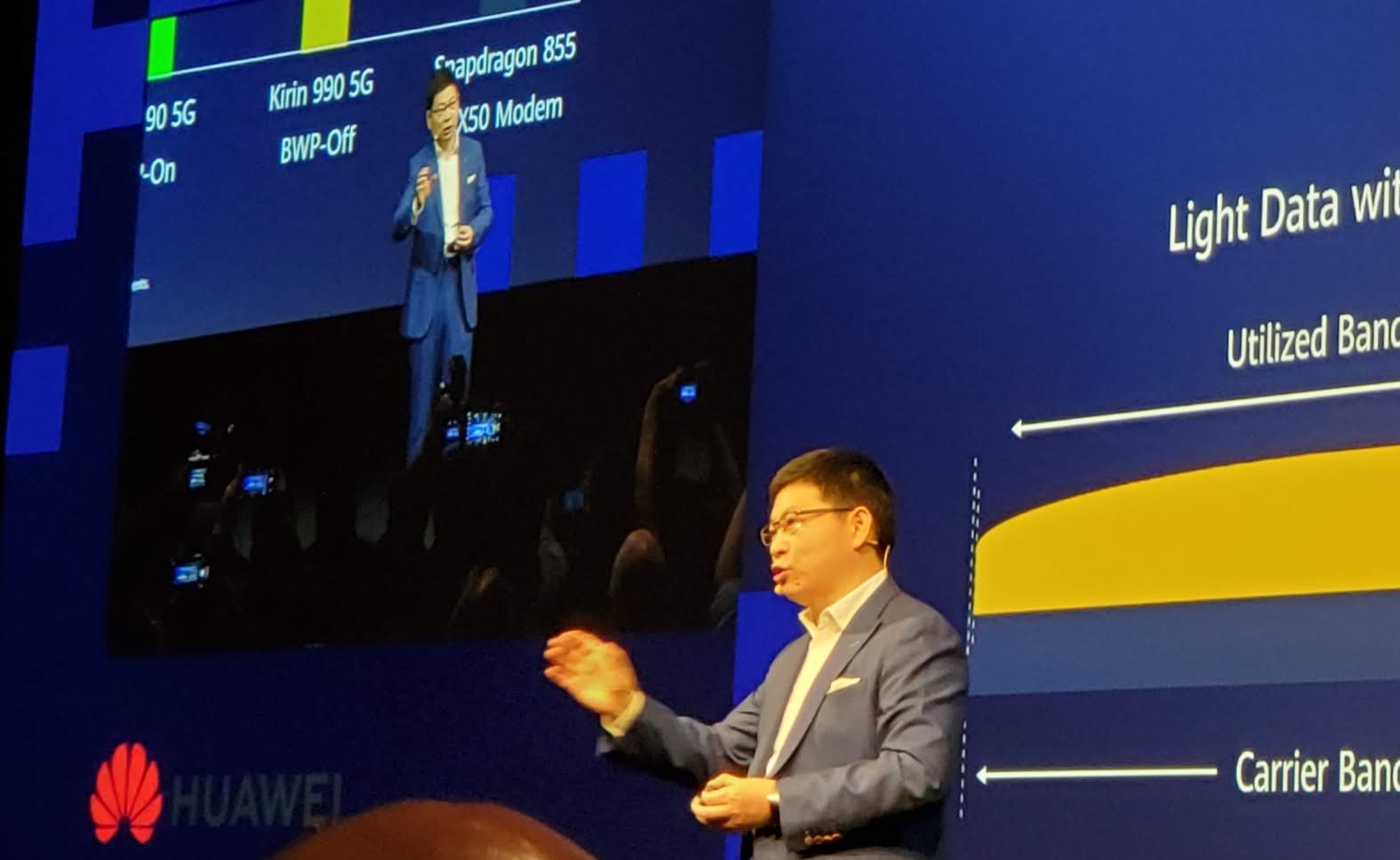After 10 years investment in 5G research and development, it’s little surprise that Huawei has found its place as the number one holder of 5G patents worldwide. With that heritage, you’d expect a quality product, and that’s what the new Kirin 990 chipset promises to be.
Huawei’s Richard Yu recalled that the company launched the Kirin 970 two years ago at IFA, and the Kirin 980 last year, the world’s first with dual AI processors on board. Richard notes that Huawei is leading AI in the smartphone world, and his claim holds true – the company’s AI processing power is measurably ahead of the competition.
Huawei’s Benjamin Wang told us that the Kirin 990 is a “revolutionary leap” forward in 5G and AI capabilities, bringing together not only the best in 5G and AI, but solid performance and – uniquely – a single chip that handles everything on board.
Where both Samsung and Qualcomm’s current generation chipsets use two chipsets to power the phone and 5G components respectively, Huawei’s rolled it all in one with the Kirin 990, which fits a whopping 10.3 billion transistors in a chipset little larger than your fingernail.

With those components, the Kirin 990 does a lot – not only does it reach the near theoretical limits of 5G speed (at 2.3 Gbps), but it does so in challenging circumstances – at speed (i.e. when you’re in the car or on a train), in low signal areas and it does so with minimal power consumption.
Huawei claims that the Kirin 990’s 5G performance loses only 10% of its speed when moving up to 125km/h, and that’s an impressive 19% faster than the nearest competitors. Equally, in low signal areas, Huawei claims to use a proprietary mix of 5G and 4G signals to deliver the best possible mobile speeds in any signal environment.

Kirin 990 sports improved AI performance, 4.76x improved performance over the two-year old Kirin 970, and approximately double the Kirin 980 from last year. This makes the Kirin 990 the most powerful AI processor in the mobile space, supporting around 90% of AI models in use, as well as doing so better than Samsung and Apple’s processors.
Due to the US trade restrictions and the flow on effects, Huawei has developed this processor using its existing ARM licensed information, rather than using the latest bleeding edge ARM tech that it’s unable to access. Despite this, Huawei states that the Kirin 990 performs 10X better than the current generation Qualcomm Snapdragon 855 in single-core performance.
Gamers need not feel left out, either, with improved 16-core graphics powered by the Mali-G76 GPU chipset. Despite this being last year’s processor – it has been superseded – Huawei claims to have brought every ounce of performance from the platform.
Where will we find the Kirin 990? Well, we understand it will first appear in the upcoming Mate 30 handsets, as well as the re-launched Mate X when it eventually arrives. For Australia, we’re likely to see our first glimpse of the Kirin 990 in next year’s P40 range, unless something comes to market sooner.
Will we see the Kirin 990 inside a phone that runs Android? Well, the Mate X is the only real confirmation thus far, and while we understand it will come to Australia, the timing is a little less clear.
There are two broad configurations that will be in use, a 5G model (with slightly improved processing speed to compensate for the demands of 5G), and a 4G model which saves a bit of power and does without the 5G components.
Chris attended IFA 2019 as guest of Huawei Australia.







I asked huawei’s consumer head in eastern China the same exact question, he laughed and said they produced just enough for their own use and not enough to supply others.
It would be good if Huawei will also allow other OEMs to use the Kirin chips. This will give Qualcomm a competition